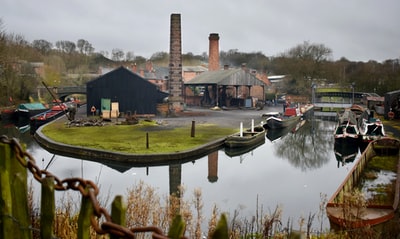 It’s impossible to talk about the civil rights movement without also talking about Martin Luther King. He was by some distance its most well-known figure, achieving international fame.
It’s impossible to talk about the civil rights movement without also talking about Martin Luther King. He was by some distance its most well-known figure, achieving international fame.
Martin Luther King was involved in some of the key events that helped to give momentum to the civil rights movement in the 1950s. For example, along with a man named Edgar Nixon, he organised and promoted the Montgomery Bus Boycott. During the boycott, King’s house was bombed and he was even arrested.
In 1957, King was one of the founder members of the Southern Christian Leadership Conference, a group whose goal was to encourage black church communities to become involved with the civil rights movement and ensure protests were non-violent. As an admirer of Ghandi, for King non-violence and peaceful protests were an essential requirement if the movement was going to be successful.
King also played a key role in leading protests in specific cities. For example, he led non-violent protests in Birmingham, Alabama in 1963, which were aimed at overturning the desegregation of businesses. The local authorities were able to get a legal injunction to stop demonstrations and sit-ins. Throughout the protests King was directly involved (rather than staying behind the scenes) and, because he was a publicly-known figure, this helped bring attention to the movement. And because he was clear a man of peace and reason who was subjected to arrest, the wider public took his side.
In fact, King’s persona was a great boost for the civil rights movement. He had an incredibly powerful way with words. If you haven’t listened to it yet, get hold of his ‘I have a dream’ speech from the March on Washington. It is pretty much impossible to find it uninspiring. And the American public seemed to agree. By the time the Civil Rights Act was passed, it was clear that a much larger proportion of white America supported the civil rights movement than in previous decades.

On 4th April 1968, King was assassinated whilst staying in a motel Memphis, Tennessee, where he was supporting striking African American workers. Reflecting just how important a figure he had come by this point, President Lyndon B Johnson made the 7th April a national day of mourning for King.
Overall, we can see that King was a crucial figure in the civil rights movement. He was a leading organizer of protests; his insistence on non-violent methods were crucial to the success of the movement’s protest actions; he was charismatic and a great orator who could communicate the idea of racial harmony and equality like few others could.
However, it is important to realise that the success of the civil rights movement was not down to King alone. While King was a leading figure, he was not the only leader, with the key protests being just as much the product of the efforts of men such as Edgar Nixon. Just as importantly, it is important to appreciate the fact that the civil rights movement required the participation of millions of brave individuals, and not just a few leaders. Ordinary people put themselves at risk by participating in marches or starting protests such as sit-ins in their own towns. In addition, some of the key events that pushed the civil rights movement forward did not involve King. For example, the first sit-in of the 1960s, held in Greensboro, North Carolina, was organized by local students, and not leading figures such as King. The same is true of the landmark Brown vs. Board of Education ruling. And without this case, being able to challenge segregation openly would have been much more difficult.
So we must recognise King’s importance to the movement, whilst at the same time also being aware its success was not down to him alone.